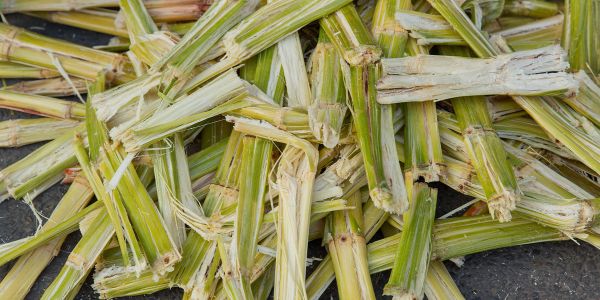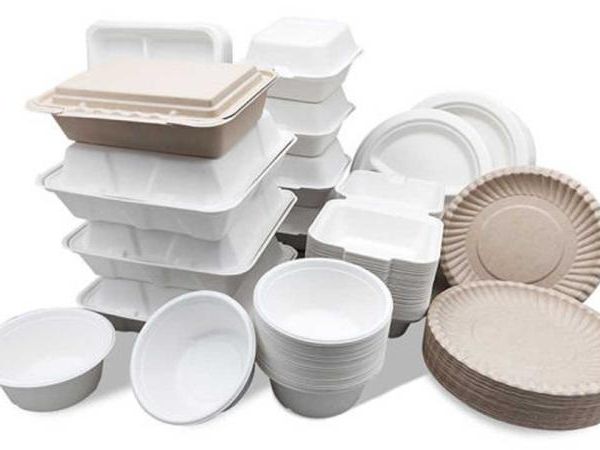Why India’s Emerging Eco-Friendly Products Are Gaining Global Attention: A Deep Dive into Bagasse-Based Solutions
As the world takes a hard turn toward sustainable living, there’s a noticeable shift in how products are made, packaged, and consumed. Countries are tightening regulations on plastic usage, businesses are being held accountable for their environmental footprints, and consumers are making mindful choices. Amidst all this, India is emerging as a powerful player in the global eco-friendly product market.
One particular material that is creating waves in international trade is bagasse — a by-product of sugarcane processing. What was once seen as agricultural waste is now powering a new generation of biodegradable, compostable, and sustainable products. From where I stand as an exporter based in India, I’ve watched bagasse go from obscurity to prominence in just a few short years. In this article, I’ll take you through what bagasse is, why it’s gaining attention globally, and the trends we’re seeing as importers around the world respond to rising eco-conscious demand.
What Exactly Is Bagasse?
Bagasse is the dry, fibrous residue that remains after sugarcane stalks are crushed to extract juice. India, being one of the largest producers of sugarcane in the world, generates an immense volume of bagasse every year — much of which is now being put to good use instead of being incinerated or discarded.
With the right processing, this humble by-product is transformed into strong, versatile, and fully biodegradable materials that serve as alternatives to plastic and Styrofoam. These materials are moulded into plates, bowls, containers, trays, packaging solutions, and even stationery. Because bagasse is natural, renewable, and compostable, it perfectly aligns with global sustainability goals.

India’s Role in the Global Bagasse Market
India holds a unique position in the global bagasse supply chain for two key reasons. First, its agro-industrial structure ensures consistent and large-scale availability of sugarcane by-products. Second, its manufacturing ecosystem — powered by both established companies and small-scale producers — is quick to innovate and scale production in response to global demand.
Over the past few years, I’ve worked with importers from Europe, the Middle East, Southeast Asia, and North America who are shifting large volumes of their product sourcing to India. What makes bagasse-based exports especially attractive is that Indian manufacturers have focused not only on production but also on achieving global certifications for food safety, composability, and quality assurance.
This gives international buyers confidence — not just in the sustainability of the material, but also in the reliability of sourcing it from India.
What Types of Products Are Made from Bagasse?
The most widely exported bagasse-based items fall into the following categories:
- Food service disposables: These include plates, bowls, cutlery, trays, clamshell containers, and cups — all of which are used in restaurants, takeout businesses, airlines, schools, and large catering events.
- Packaging materials: Bagasse is increasingly used to produce moulded packaging, egg cartons, industrial cushioning, and even electronic goods packaging as companies seek plastic-free solutions.
- Office and consumer products: There’s growing innovation in bagasse paper for notebooks, files, and disposable office supplies. Some small-scale industries are also crafting flowerpots, lamp holders, and artisanal decor using bagasse pulp.
What’s important to note here is that these products are durable, heat-resistant, grease-resistant, microwaveable, and compostable — making them extremely practical and versatile in real-world use.

Why Is There a Surge in Demand for Bagasse?
- Sustainability at the Core : Bagasse is 100% plant-based, free from toxins, and biodegradable within 60 to 90 days in composting conditions. For many importers, especially those supplying to eco-conscious retail chains or government agencies, this makes it an ideal alternative to plastic or Styrofoam, which can take hundreds of years to break down.
- Global Environmental Policies : A growing number of countries are enforcing bans or heavy taxes on single-use plastic. The EU’s Single-Use Plastics Directive, Canada’s zero plastic waste initiative, and Australia’s state-level bans have forced businesses to look for viable substitutes. Bagasse-based products meet many of the criteria outlined in these new regulations.
- Consumer-Driven Change : End-users — particularly millennials and Gen Z — are driving the green movement. Restaurants, hospitality chains, grocery stores, and e-commerce brands are responding by switching to compostable packaging and service ware. Importers who cater to these industries are increasingly turning to suppliers like India, where these products are made at scale.
- India’s Manufacturing Capability : India’s rise in this space is not just due to raw material availability. It’s also about how quickly Indian manufacturers have invested in automated moulding technology, eco-certifications, R&D, and design capabilities. Whether it’s custom branding on packaging or complex shapes for industrial packaging, the industry has matured rapidly in recent years.
Bagasse Trends to Watch in 2025 and Beyond
As we look at where the bagasse industry is headed, several key trends are emerging that international importers should be aware of:
- Customized compostable packaging: There’s a rising demand for brand-specific moulded packaging, especially among food delivery, cosmetics, and premium gifting sectors.
- Bulk procurement by large institutions: Universities, airlines, hospitals, and public sector bodies are placing bulk orders for bagasse products to meet sustainability mandates.
- Expanding applications beyond food service: While food disposables still dominate, manufacturers are exploring uses in electronics packaging, agriculture (like seedling trays), and consumer goods.
- Cross-material innovation: Hybrid products combining bagasse with bamboo or cornstarch are entering the market, offering unique strengths for different use cases.
Final Thoughts
The story of bagasse is a great example of how sustainable thinking and practical innovation can transform an agricultural by-product into a global commodity. As an Indian exporter, I see firsthand the growing enthusiasm among international buyers who not only want to meet regulatory requirements but also genuinely want to offer eco-conscious products to their markets.
India’s capacity to produce high-quality, certified, and affordable bagasse products is opening up new doors for importers around the world. Whether you’re sourcing for food service, retail, hospitality, or manufacturing, bagasse is no longer an alternative — it’s fast becoming the standard.
If you’re exploring your next sustainable product line, I’d strongly recommend looking deeper into what India has to offer with bagasse. It’s a material with a strong future — and the world is ready for it.

